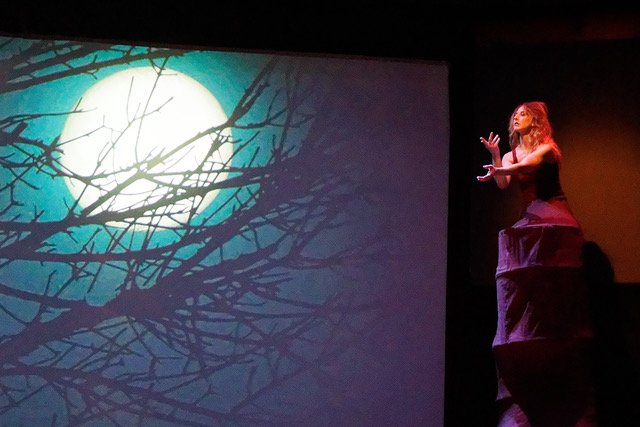Zaubernacht
Museum of Jewish Heritage - A Living Memorial to the Holocaust
Edmund J. Safra Hall, 36 Battery Place, New York City
Choreographer/Director: jody oberfelder
Music Director: Gary S. Fagin
Lighting Designer: Savannah Bell
Assistant Lighting Designer: Sarah grace lehman
Animation/Video Design: Eric Siegel
costume designer: Summer Lee Jake
Prop Designer: LExy Ho-Tai
March 2018
music by: kurt Weill
based on a story by Wladimir boritsch** Program Description below**
Photography: Christopher Duggan













Stories about toys coming to life at night are as old as story-telling itself. Stage versions of such stories at the end of the 19th century included Josef Bayer’s and Josef Hassreiter’s The Doll Fairy (1888), about dolls in a toy store that a fairy brings to life at midnight, and Tchaikovsky’s The Nutcracker (1892), Alexandre Dumas Père’s adaptation of E.T.A. Hoffmann’s 1816 story, “The Nutcracker and the Mouse King.” Weill was likely familiar with The Doll Fairy and The Nutcracker stories, but it is unlikely he knew The Nutcracker score, as that work’s first performance outside of Russia was in England in 1934 (the first U.S. performance wasn’t until 1944 in San Francisco; George Ballanchine’s New York City production, that launched The Nutcracker’s enduring popularity as a seasonal Christmas staple, premiered in 1954).
The scenario for Zaubernacht (Magic Night) was by Wladimir Boritsch (1891-1954), a Russian children’s theater promoter. Before arriving in Berlin in 1921, Boritsch had staged a version of Zaubernacht in Lithuania in 1919, with music by another composer. It’s not clear how Boritsch engaged the young Kurt Weill (1900–1950) to compose the music for the 1922 Berlin production, but they might have met as a result of Boritsch’s relatives living in the same Berlin building as Weill’s composition teacher at the time, the esteemed Ferruccio Busoni.
Zaubernacht premiered at Berlin’s Theater am Kurfürstendamm on November 17, 1922, all the characters portrayed by students from the ballet school of influential prima ballerina and choreographer Mary Zimmermann; the nine-piece instrumental ensemble (flute; bassoon; piano; percussion; string quintet)was conducted by George Weller.
Bortisch came to New York City in 1924 with the idea to establish a children’s theater. His first production included the American premiere performance of Zaubernacht on December 28, 1925, at the Garrick Theatre on 35th Street. The choreographer was Michio Ito; the conductor was Lazar Weiner (I had the privilege to work with Weiner’s son, noted pianist and composer, Yehudi Wyner, at Yale).
There the Zaubernacht performance history stops for decades, as the instrumental parts disappeared, and Weill’s orchestral score was presumably lost when he fled Berlin in 1933. In 2005, however, the original instrumental parts for Zaubernacht that Boritsch brought from Berlin for the New York performance were discovered in a Yale University library safe.
This production of Zaubernacht is the first in New York City with the original orchestrations since the work’s 1925 American premiere. Now that Zaubernacht can resume its valued place in the Weill oeuvre, the Kurt Weill Foundation is encouraging directors and choreographers to create their own scenarios that are appropriate to the music.